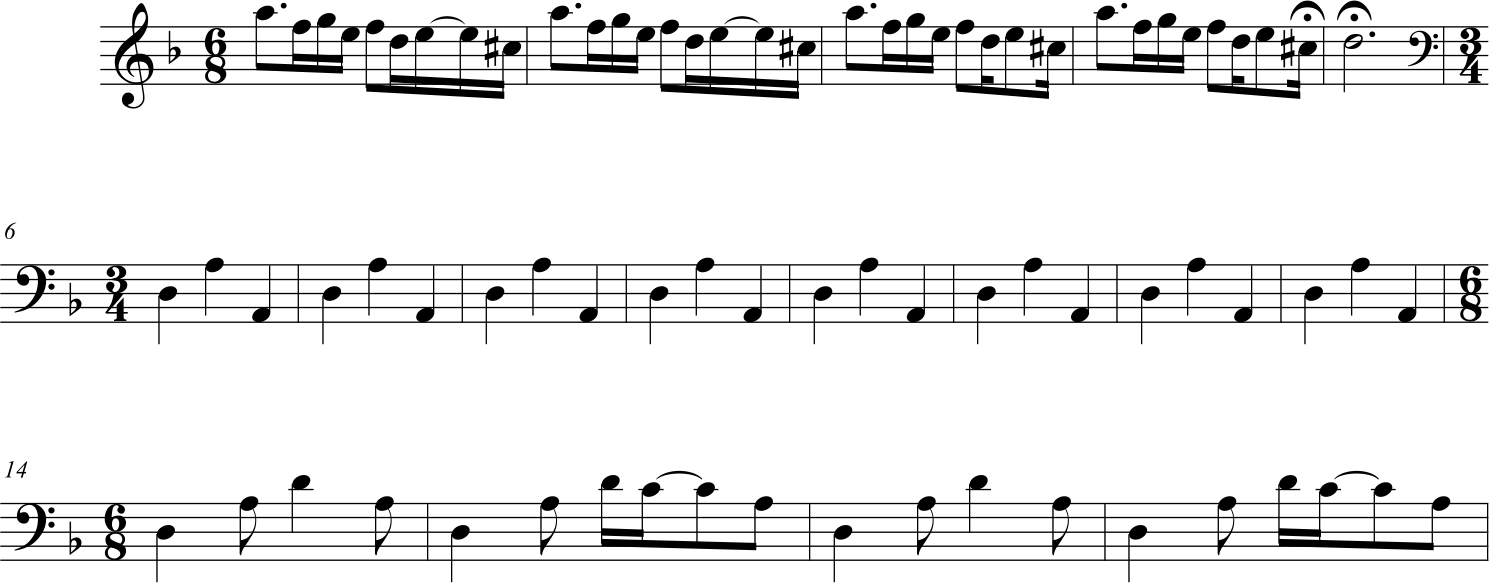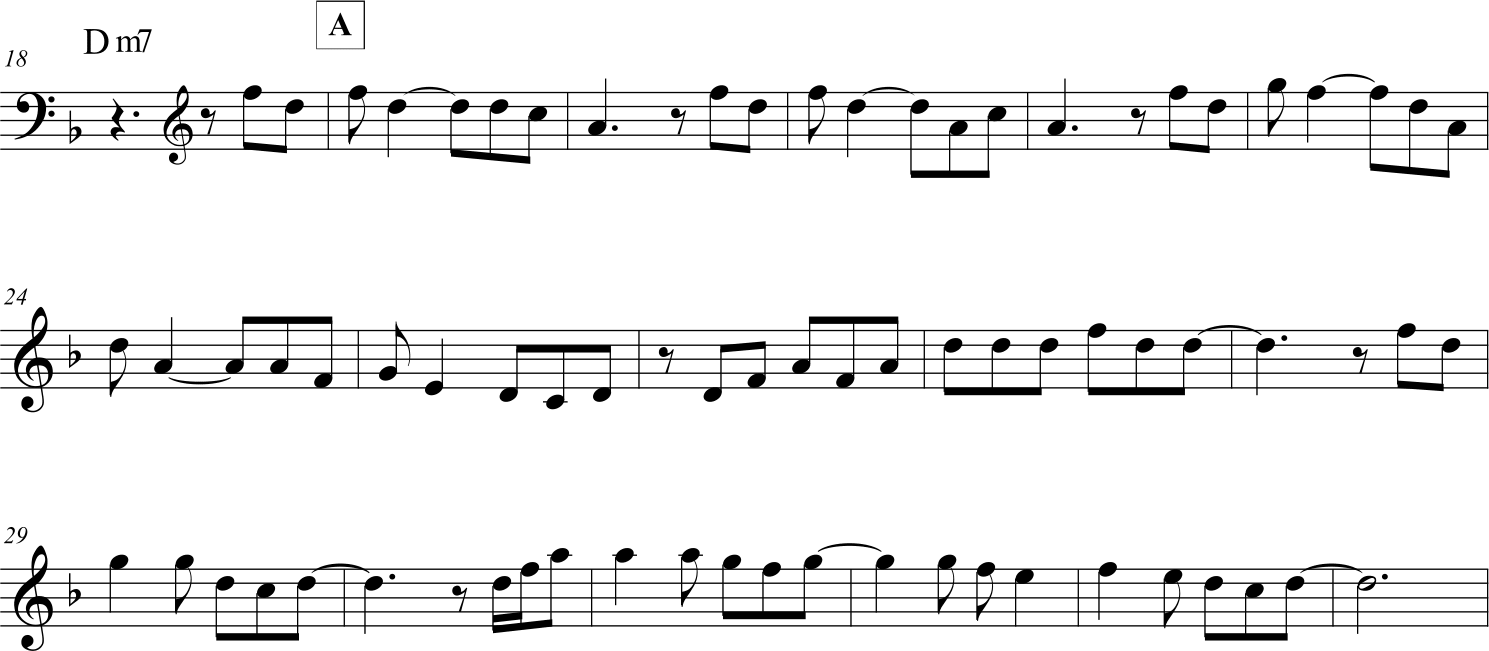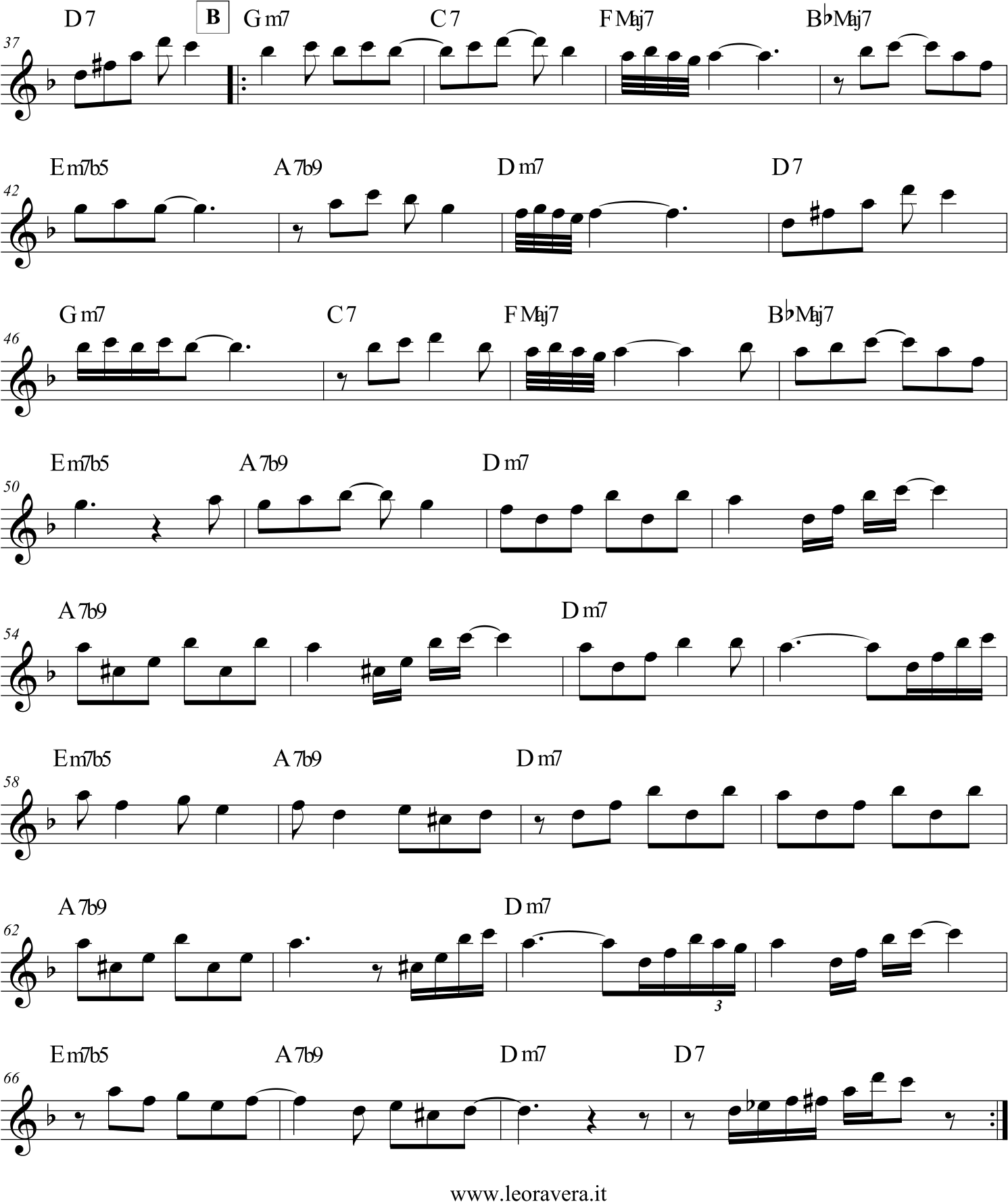[Monday Notes No. 56] Merceditas is taken from Bolivia, one of Gato Barbieri’s best albums. The song makes extensive use of the pentatonic scale. The scale is used in various musical cultures, from Africa to the Far East, to Andean folk music, which uses instruments tuned precisely to the pentatonic scale.
In Merceditas we can also appreciate another typical feature of South American music: polyrhythm. The importance of rhythm in Merceditas is confirmed by the robust percussion section that includes a drummer, a conga player, a third percussionist and the rest who sometimes join in by clapping their hands.
After a free saxophone introduction, Gato calls “Primera” (meaning “first part”, 0’33”). The bass plays a phrase of quarter notes which initially seems to suggest a time of 3/4 (measures 6-8), before moving on to a more explicit accompaniment in the compound time of 6/8 (from measure 14).

The first section of the theme (part A, 1’03”) is played on the D pedal maintained by the bass, the melody being based almost entirely on the Dm pentatonic scale.

The second section of the theme (part B, 1’32”) is based on the progression in fourths typical of many pieces (e.g. Autumn Leaves). Although the rhythm section continues to play in 6/8 time, the saxophone repeatedly plays 3/4 phrases at measures: 49, 51, 53, 55, 57, 63, 65.

The first solo is by the saxophone (2’23”), followed by an improvisation by pianist Lonnie Liston Smith (4’08”). After having re-performed the theme (4’51”) Gato Barbieri calls “Segunda” (“second part”, 5’35”), the tempo starts again and we soon realise that the pulse has doubled.
In fact the 6/8 is now split into two bars of 3/8 each and the theme is played in this doubled tempo. But that’s not all, because the saxophone further subdivides the simple 3/8 time into compound time, effectively playing a 6/16 time.
In this piece, within one time there is another, which contains yet another. All the possibilities coexist in every moment of the piece, repeatedly confirmed or denied. “Primera’ and ‘Segunda’ are thus inherent in each other. Few pieces can render the concept of polyrhythm so clearly as Merceditas by Gato Barbieri.
Until next Monday!
Download the lead sheet of Merceditas from the album “Bolivia”, 1973.
Click here to download the lead sheet


